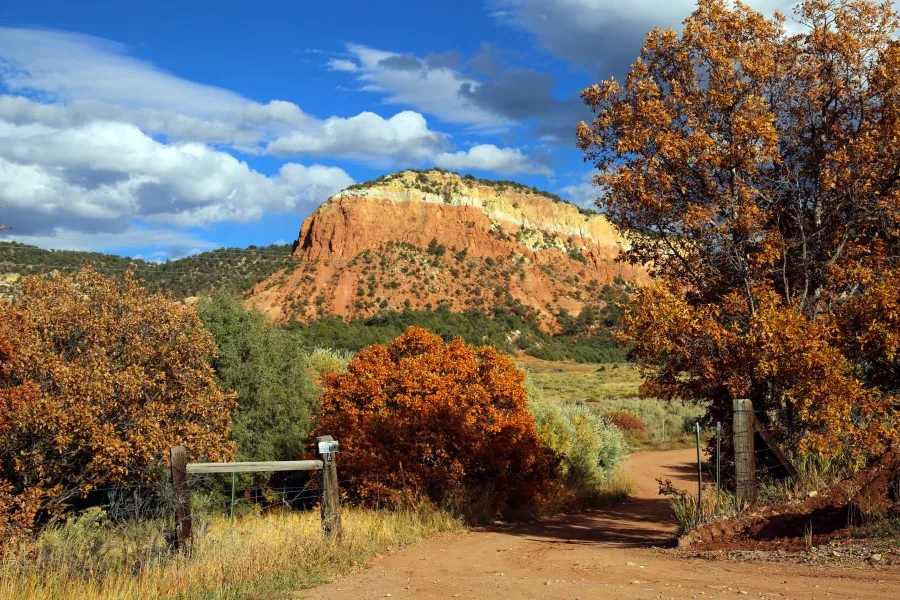West Texas and Southern New Mexico – The much-respected Old Farmers Almanac has released its forecast for the fall weather in West Texas and Southern New Mexico, predicting a season that is cool and dry. Known for its historically accurate predictions, this almanac offers valuable insight as residents await the transition from a summer marked by unexpected rain and cooler temperatures.
Understanding the Difference: The Two Farmers Almanacs
Before delving into the forecast details, it’s important to clarify the distinction between the two well-known almanacs: the Old Farmers Almanac and the Farmers Almanac. Though their names are similar, they differ in age and forecasting methodology.
- Old Farmers Almanac: First published in 1792, it bases its predictions on a blend of solar activity, prevailing weather patterns, meteorology, and, recently, integrates satellite data, jet stream patterns, and ocean temperature records for enhanced accuracy.
- Farmers Almanac: Established in 1818, this newer publication uses mathematical and astronomical equations, including solar and lunar tidal activity, but does not incorporate satellite data.
These fundamental differences inform their unique forecasting styles and results.
Old Farmers Almanac’s Fall Forecast: What to Expect
According to the Old Farmers Almanac, residents of West Texas and most of New Mexico should prepare for a cool and dry fall. This forecast contrasts with the almanac’s earlier hot and dry summer prediction, which was challenged by an unexpectedly rainy and cooler season.
Many locals and meteorologists will be watching closely to see if the almanac’s fall projection holds true, especially given the recent unpredictable summer weather.
- Cooler temperatures are expected to dominate the fall months.
- Dry conditions are predicted, reducing the likelihood of significant rainfall.
As the season develops, this forecast will be tested against emerging weather patterns.
Debunking Common Weather Myths
Alongside its forecast, the publication reminds readers of pervasive misconceptions about weather phenomena.
- Heat lightning isn’t a unique phenomenon; it is simply lightning from distant thunderstorms where thunder cannot be heard.
- Hurricanes can affect areas up to 150 miles inland, not just coastal states.
- Colds are caused by viruses, not cold weather itself.
- A green sky doesn’t necessarily indicate an imminent tornado; it can result from storm clouds distorting sunlight.
- Your car protects you from lightning due to its metal frame, not rubber tires.
And many more myths are clarified to help residents make informed decisions during severe weather events.
“Heat lightning is simply regular lightning from a storm too far away to hear or see the strike, debunking a common weather myth many have believed,” explains meteorologists familiar with regional patterns.
Understanding Severe Weather Watches and Warnings
Given the region’s exposure to severe weather, it’s crucial to understand the differences between the various alerts issued by the National Weather Service. Here is a concise overview:
- Severe Thunderstorm Watch: Conditions are favorable for severe thunderstorms.
- Severe Thunderstorm Warning: Severe thunderstorms have been observed or detected by radar and are occurring or imminent.
- Tornado Watch: Conditions support the development of tornadoes along with severe thunderstorms.
- Tornado Warning: A tornado has been sighted or indicated by radar; immediate safety measures should be taken.
Understanding these alerts helps ensure residents can react promptly to potential threats, enhancing community safety.
For further background on related winter weather impacts in the region, including snowfall benefits, see the detailed coverage on Why Snow Is Good For El Paso.
Looking Ahead: How Reliable Is the Forecast?
The Old Farmers Almanac has a long-standing reputation for accuracy, but like all weather forecasting methods, it is not infallible. The recent deviation from predicted hot, dry conditions during summer highlights the challenges inherent in meteorology.
Residents and farmers in West Texas and Southern New Mexico are encouraged to prepare based on the forecast while staying updated through local weather services for the most current information.
Key Takeaways
- Prepare for a cooler, drier fall in West Texas and Southern New Mexico as forecast by the Old Farmers Almanac.
- Familiarize yourself with severe weather watches and warnings to stay safe during weather events.
- Acknowledge and avoid common weather misconceptions to make informed decisions.
- Keep an eye on local forecasts for the most up-to-date weather conditions.
What do you think about this fall weather prediction for Texas and New Mexico? Have you noticed any changes in the local climate recently? Share your thoughts in the comments below!







